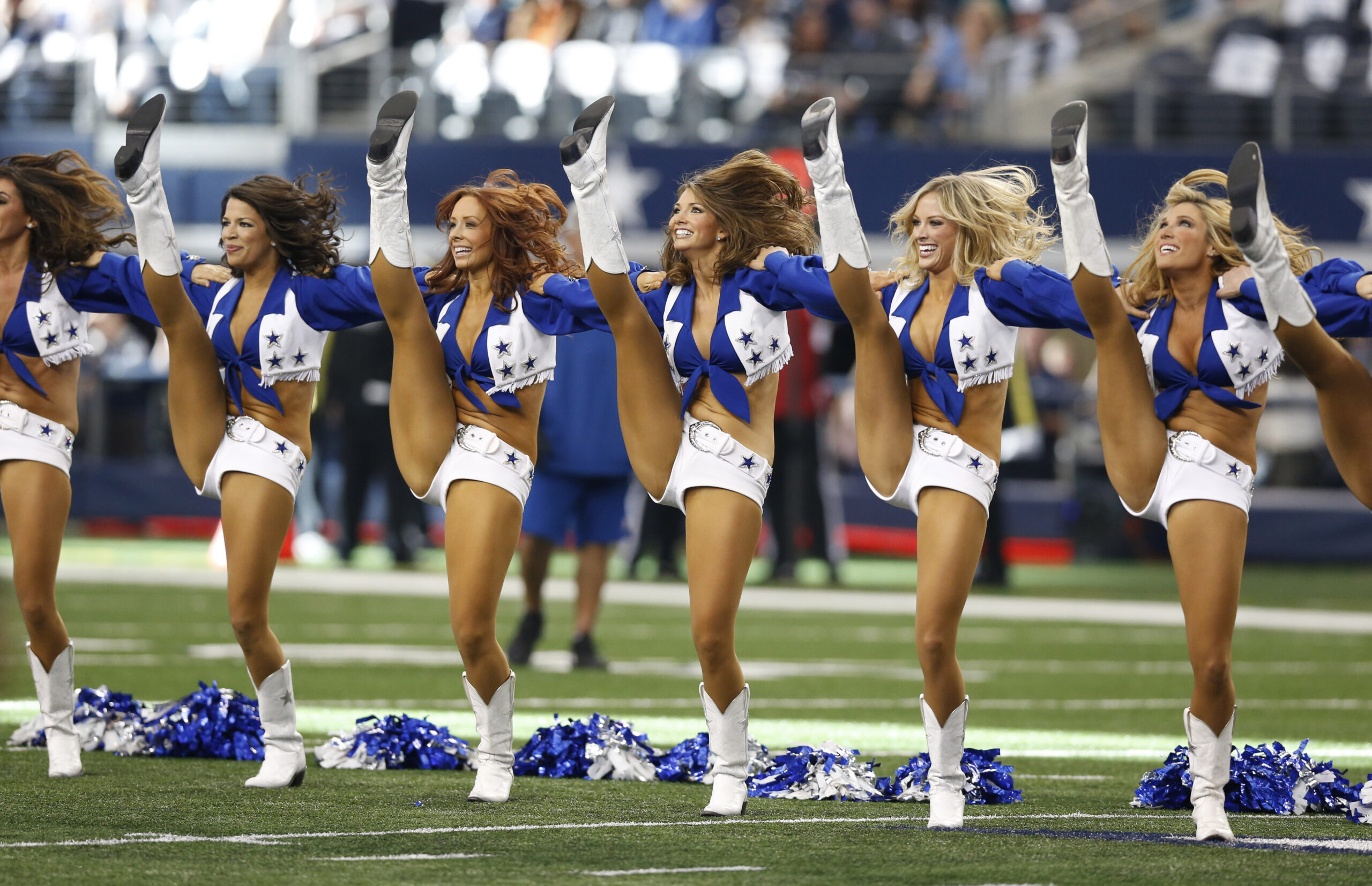When you think of the Dallas Cowboys Cheerleaders, what’s the first image that comes to mind? I’d say it’s their kickline. It’s their signature, an iconic routine performed at every home game. Every time you see a photo of it, you will notice that everyone’s kicks are over their head at the same height, with pointed feet and straight legs. Just as your dancing and showmanship need to be big and precise, so do your kicks.
Kicks do not come naturally to everyone. On the show, it can look like every girl has the best flexibility, but in reality, many dancers struggle with their kicks. I did when I cheered. Portions of my body limit me from stretching and rotating to my full ability. I would have to stretch for longer periods, around 20 to 30 minutes, to ensure I would not pull a muscle. But the key to success is stretching your muscles before and after practice to strengthen your kicks. That’s what I had to do to better myself each season and stay in the game with the girls that could kick all the way to their faces with ease. When you don’t properly stretch before kicking, it can lead to serious injuries.
Back in the season premiere of Dallas Cowboys Cheerleaders: Making The Team, DCC veteran Daphne was called into the office to talk about an ACL injury that she was recovering from. Sadly during the week three practice, her other leg buckled and she ultimately had to remove herself from training camp. Why? Kicking. That’s hardly uncommon. There were a handful of times I saw some of my teammates get injured from doing the kickline.
That wasn’t my story, but I know firsthand what it’s like to perform as a cheerleader through injury. I spent almost an entire year cheering while managing and trying to heal from arthritis in my right foot. I spent all day on my feet — bartending during the day, cheer practice at night — which is why, at 25 years old, I found myself in a podiatrist’s office searching for answers. The doctor gave them to me by circling the areas spotted on the X-rays where three bones on the top of my foot were rubbing together. “This isn’t normal for your age,” he told me.
For the next four months, I wore a walking boot every day when I wasn’t cheering so I could relieve some of the pain during the day. With any luck, that would give me enough strength in my foot to get through that night’s rehearsal or game days. So it went, over and over again, until I retired from cheering at the end of my fifth season.
Many professional cheerleaders push their bodies to the absolute limit and suffer through the pain because they know what they are living through is a once-in-a-lifetime opportunity. But there is a short timeframe for women to be professional cheerleaders, usually between their early 20s to mid-30s, but only for so long. The average tenure is three years, but I know a couple of women who cheered for 10. They’re the exception. Cheerleaders are athletes, and just like athletes in other sports, our bodies can only handle so many years. Sometimes, that pain stretches across multiple NFL seasons. Sometimes it stays with you forever.
You have to listen to your body and know when it’s time to stop because you may do more harm by continuing to dance. It’s a tough choice to make, but that was one of the reasons I decided to retire when I did. I was lucky: I got the luxury of choosing when my cheerleading career would end instead of getting cut or, in Daphne’s case, my body giving out as I was preparing for another season. But the women on the show all strive to be a professional cheerleader knowing the risks and commitment needed. That’s why there’s a reality show like this in the first place, after all. There’s nothing else like it, for better or worse.
Rachel Gill is D Magazine’s Chief of Staff and a former NFL cheerleader.






